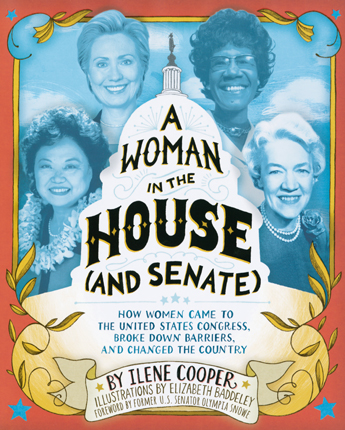Full Text Reviews: School Library Journal - 03/01/2014 Gr 6–10—This volume begins with a profile of the first woman to serve in Congress, Representative Jeannette Rankin, elected in 1916. Cooper includes some background about the struggle for women's suffrage but focuses on the 20th century and organizes the book by era, comparing women's progress in Congress with their overall status in the country. She describes their gradual advancement from filling seats of dead husbands or fathers to running, winning, and leading on their own. The final chapters on the contemporary period concentrate on women who broke new barriers, such as Shirley Chisholm and Nancy Pelosi, or became nationally prominent, such as Geraldine Ferraro. Cooper celebrates the gains women have made, but explains that parity remains a distant goal. Her informal writing style includes interesting details and anecdotes about the women's struggles and triumphs. However, the book contains several errors, the most important being the author's repeated claims that vacancies in the House can be filled by appointment, when constitutionally, all House seats must be filled by election. (Senate vacancies can be filled by appointment.) The text is supplemented by photos and cartoon-style illustrations, an appendix on how the federal government operates, and a list of women who have served in Congress. Although there are many individual biographies of Congressional women, few describe the progress of women as a group, and most of those, such as Jill S. Pollack's Women on the Hill (Watts, 1996), are dated. The error regarding appointment to House seats is an unfortunate oversight; some libraries may wish to pass on this title or wait for a corrected edition. If librarians and educators can look beyond this flaw, the engaging biographical sketches and lively overview of women in American politics presented in this work may prove worthy of inclusion in some collections.—Mary Mueller, Rolla Public Schools, MO - Copyright 2014 Publishers Weekly, Library Journal and/or School Library Journal used with permission. Bulletin for the Center... - 06/01/2014 Many of the female “firsts” in this collective biography have already stepped into the spotlight in children’s nonfiction: first woman representative, Jeannette Rankin; first African-American woman representative, Shirley Chisholm; first woman Speaker of the House, Nancy Pelosi. Although noting the groundbreaking (or, perhaps, ceiling breaking) accomplishments of these individual women, Cooper is far more interested in demonstrating the diversity and historical context of the issues championed by women politicians and the regional and social correlations to their electability. The presentation is divided by clusters of decades, each introduced with an overview of the historical zeitgeist, and then focused on individuals emblematic of the period. Thus, congresswomen of the 1920s and ’30s cluster shared the likelihood that they stepped into an office vacated by the death of a husband or father; another group from the ’30s to ’50s had previous high-profile careers of their own right; the ’60s through ’70s saw the fruits of the civil rights movement in the election of black women to the House. Cooper goes beyond noting the women’s arrivals and offers a brief overview of issues, committee work, successes, and disappointments that marked their stay. The layout is clear and generally attractive: cameo photographs accompany each entry, interspersed with slightly stilted art and set against pages bordered with patriotic motifs. Copious end matter includes a crash course on federal-level civics and women’s suffrage; a complete list of women in Congress; citations, bibliography, and a particularly well-designed and helpful index. EB - Copyright 2014 The Board of Trustees of the University of Illinois. Loading...
|





